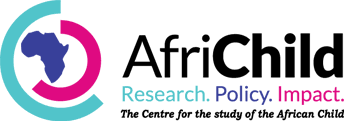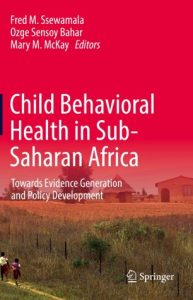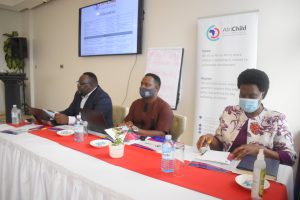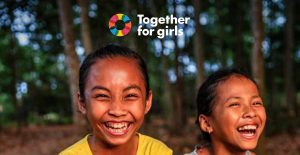
Street-connected children and children in general as a vulnerable demographic are and continue to be an integral part of the global agenda. UNESCO puts the number of children on the street in the world at 150 million with 30 percent of these being part of the Sub-Saharan Africa (UNESCO, 2017). While the actual number of street– connected children in Uganda remains unknown, various sources have quoted different figures with one of the most recent enumerations revealing that that there were 15,500 children, aged 7-17 years, living and/or working on the streets across the four study locations; Iganga, Jinja, Kampala and Mbale. (Retrak, 2018).
The spectacle of children plying the streets is a growing concern and there is urgent need to understand the push and pull factors for this phenomenon. The need to find a lasting and effective solution to the problem of street children, has attracted a variety of responses from government, urban planners and the voluntary sector. Kampala Capital City Authority (KCCA) drafted the Kampala Child Protection Ordinance (2019), which criminalizes the loitering, begging, solicitation, vending, hawking among children on the street, offering them money, food or clothing and bans the sale of alcohol and drugs to these children. It further makes it an offence for any member of the community to offer financial or material assistance to children on the streets. Questions abound about the practicality and effectiveness of this action. Parliament also recently approved a Shs.3.4 billion supplementary budget for the Ministry of Gender, Labor and Social Development (MGLSD), a portion of which is expected to fund a biometric registration system for children on the streets.

Despite the above initiatives, insufficient data on the nature and extent of children’s vulnerability in Uganda continues to present a challenge to government, civil society and development partners in priority setting, resource allocation and developing effective approaches to improve well-being of these children.
AfriChild Organizes a Public Dialogue to discuss the plight of street-connected children
Against this background and in line with AfriChild’s mandate to build evidence through rigorous research that informs policy and practice on the African child, the Public Dialogue on Street-Connected Children, under the theme: ‘The Plight of Street-Connected Children: Are We Doing Enough?’ was convened on October 18th 2019 to provide a platform for sharing current knowledge and obtaining insight into the public’s views, concerns and aspirations on issues relating to children on the streets.
Timothy Opobo, the executive director of AfriChild, while giving his keynote address told participants that as a country, if we hope to achieve physical and economic transformation, we must deliberately invest in the children and ensure they achieve their greatest potential.

“Where is justice for the many street-connected children and many other children who suffer serious harm on our streets? The reality is that we failed these children collectively as a society.”
Timothy Opobo
He highlighted poverty as one of the major contributing factors with 21% of Ugandans living below the poverty line (UBOS, 2017) and half the world’s child population living in absolute poverty (UNICEF 2016). Other contributing factors are family circumstances, abandonment and trafficking. The family setting is constantly evolving leaving more children exposed to increased incidences of separation/ divorce, high levels of abuse and violence which force these children to leave their homes. There are also children who are abandoned by their families and those who become street involved due to abduction and human trafficking; this situation is especially prominent among child beggars predominantly from Karamoja region. The human traffickers lure children away from home with the promise of work and the opportunity to earn large amounts of money.

The street therefore offers freedom, a chance for survival against the odds, a home and a safe space for these children that are considered unwanted. However, the same street they are exposed to exploitation by their peers, adults, law enforcement personnel and to criminal activities, illicit behavior, drug abuse and death. Despite cognizance of the threats faced by street-connected children, Opobo noted with concern that Uganda still doesn’t have a specific law on street connected children. The current policy framework (National OVC policy, NSPPI, NIECD) provides action plans/guidelines to providing for and achieving social development of vulnerable groups, including street connected children. The yet to be passed KCCA Child Protection Ordinance (2019) purposes to protect children against labor exploitation however it does not address the pull and push factors that force children onto the streets.

“Unless we invest in the protection of street-connected children, in the future we shall have to contend with 15, 000 thieves/rapists/ drug addicts. We have a duty to address this,”
Timothy Opobo
Reflections from government

Mr. Mondo Kyateka, the assistant commissioner in charge of youth and children in the Ministry of Gender, Labour & Social Development revealed that the central Government in collaboration with city and town authorities had on several occasions removed children from the streets but they come back every time. This, according to Mr Kyateka, demonstrated that removal of the children from the streets addressed the symptom and not the cause.
“There is need to address the pull and push factors and until we do this all efforts will be in vain,” he said.
Kyateka opined that the phenomenal of street-connected children could be exacerbated by the fact that Ugandans are producing more children than they can care and provide for. This is also ties into children being sexually active at an early age.
Views from the panel discussion

Moses Wangadia, the team leader of Retrak Uganda submitted that the issue of children on the streets should be addressed using two approaches simultaneously; the protective approach of rescuing and reintegrating the children into family care and the second is contending with the push and pull factors. From data collected during an enumeration exercise, Wangadia indicated that parental neglect, lack of access to school and trafficking were the highest ranking push factors.
Maureen Muwonge, the deputy country director of Dwelling Places said that in Katakwi and Soroti districts, specifically Arapai market, children are sold sometimes by their parents for as little as Shs. 50, 000 shillings or less depending on the buyer’s bargaining power. Ms Muwonge highlighted development of policy/ legislation and its implementation as one of the more effective pre-emptive measures. Napak District Local government developed an ordinance that has been instrumental in curbing child trafficking. Their district Police Child and Family Protection Unit (CFPU), between January and June 2019 intercepted buses carrying 131 children destined for Kampala. Thanks to existing legislation, 28 child trafficking cases have been tried in Napak District and 14 in Kampala.
For a more preventative approach, Ms Muwonge recommended increasing awareness on the plight of children on the street, including and engaging the youth on street-connected children discourse, empowering the street-connected children to share their experiences and sensitizing them on their rights and responsibilities.
Zaina Nakulubwa, a senior probation officer in KCCA noted that while the tragedy manifests itself mainly on the streets of Kampala, the children come from all over the country and even across borders – from D.R Congo and South Sudan. This, Nakulubwa revealed, has posed serious challenges for city authorities in planning and managing the issue since most of the children are on the streets during the day and at night retreat to their different locales.
“Government plans to strengthen their “gate-keeping” mechanisms by building the capacity of local councils to monitor and address the matter at district level. Government has also partnered with and continues to work with child-focused NGOs and private companies to meet the need of these children. However, there is a need to streamline these efforts,”
Zaina Nakulubwa, KCCA
John Mugerwa who represented Police noted that between January and July 2019, 633 children had been rescued by police in collaboration with KCCA and sent to Kampiringisa Rehabilitation Centre in Mpigi District. In response to reports about police brutality, Mugerwa remarked that with a mandate to serve and protect all citizens and their property, police are often put in the difficult position of protecting the property of the people that gets snatched (stolen) by some street-connected children, reprimanding the delinquent children and protecting them(children) from mob justice.

The dialogue ended on a high with a plenary discussion from participants from various organizations. To find out more on what was discussed, read more here:






